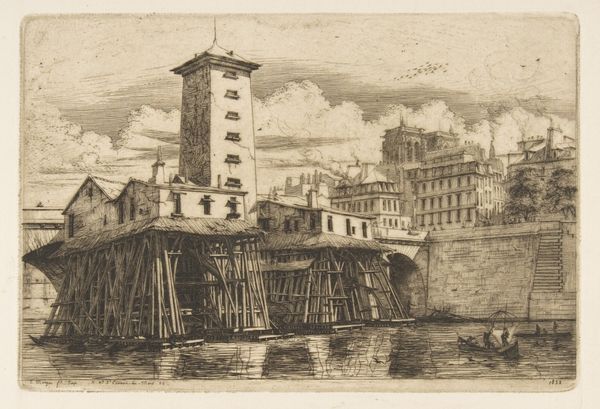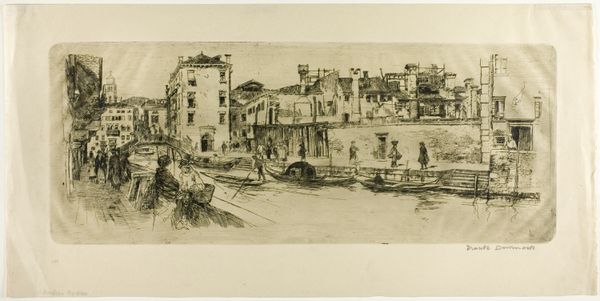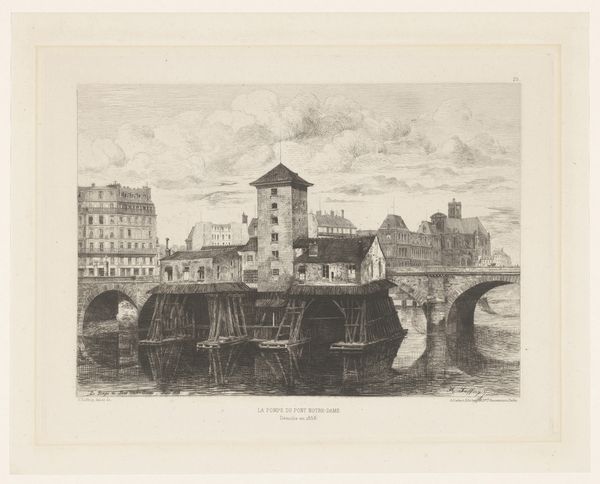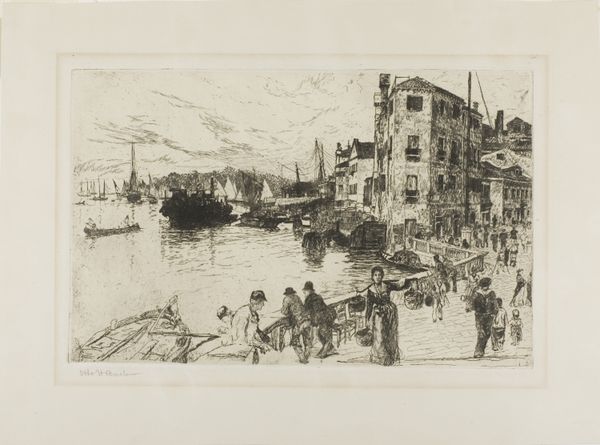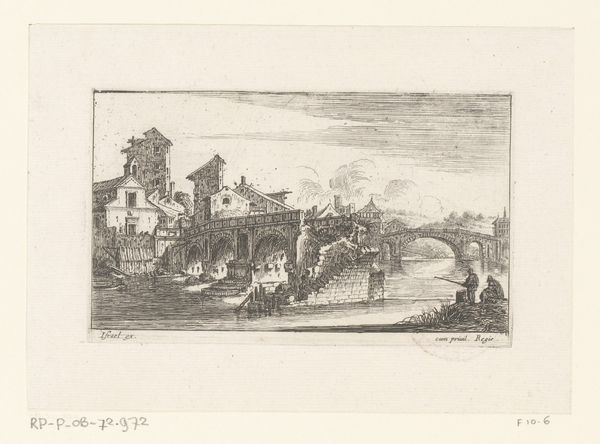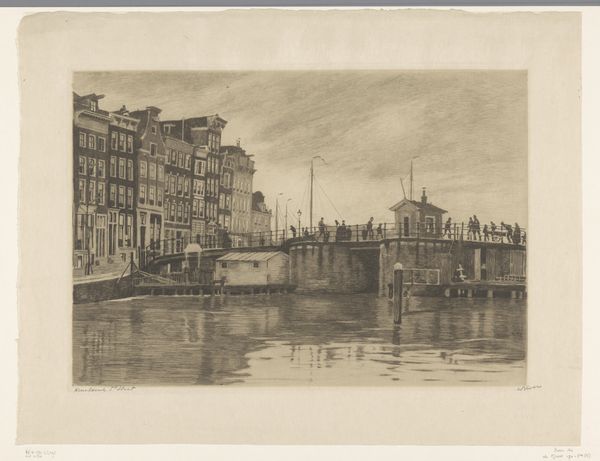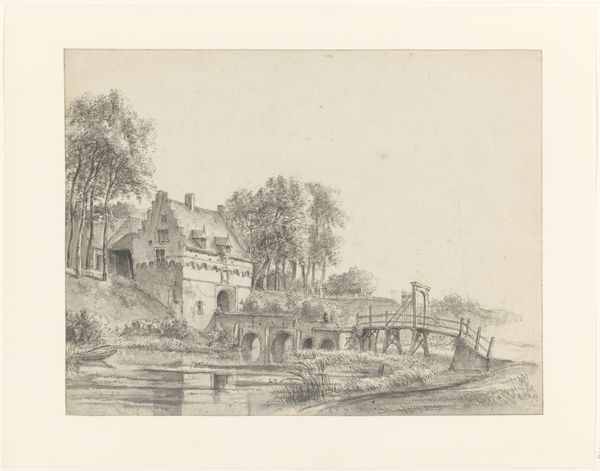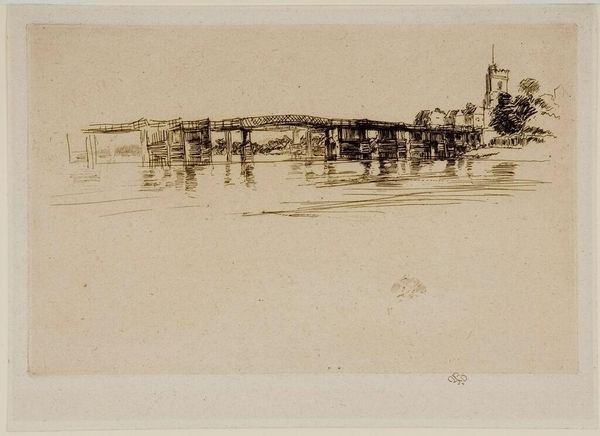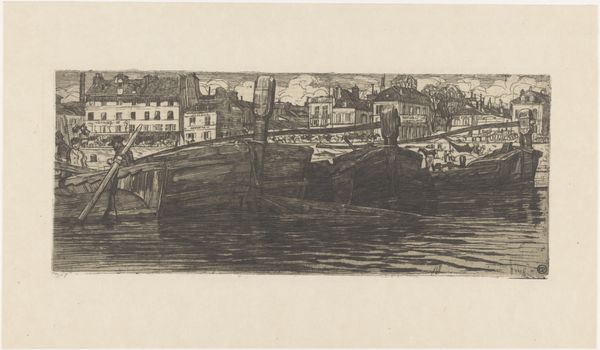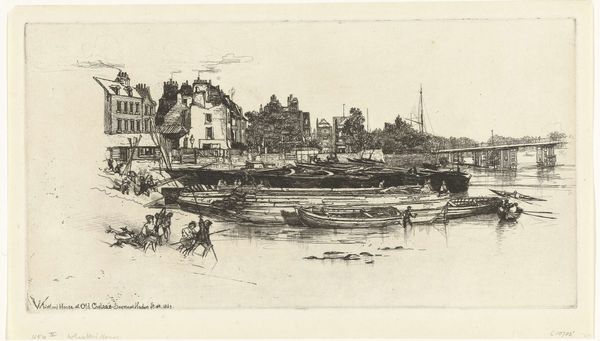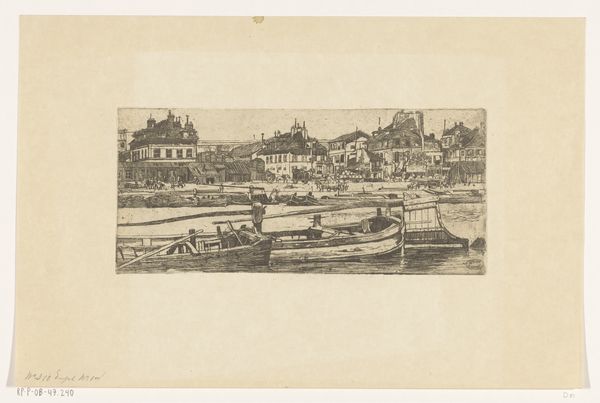
drawing, print, etching, paper
#
drawing
# print
#
etching
#
landscape
#
paper
#
cityscape
Dimensions: 171 × 244 mm (image, including stray marks); 171 × 254 mm (plate); 161 × 244 mm (primary support) ; 243 × 324 mm (secondary support)
Copyright: Public Domain
Editor: This etching, "La Pompe Notre-Dame, Paris" from 1852, has such a unique feel to it. I'm drawn to the contrast between the intricacy of the pump structure and the grand cityscape in the background. What do you see in this piece? Curator: I see a powerful visual statement about urban development and its impact on the city's most vulnerable. Notice how the industrial structure of the pump station dominates the foreground, almost obscuring the architectural beauty of Paris itself. What do you think this placement conveys about the city's priorities at the time? Editor: Perhaps it's meant to suggest the necessary cost of progress. This pump station provides water but maybe also contributes to some form of pollution? Curator: Exactly. Think about the social classes who benefited most directly from that "progress." Did everyone have equal access to this newly pumped water? Consider how the artist might be subtly critiquing the unequal distribution of resources, highlighting who bears the burden of industrial advancements and at whose expense. Who benefits and who pays the price? Editor: That’s a perspective I hadn’t considered! So, the very composition itself—the imposing pump versus the faded cityscape—is a commentary on power dynamics within Parisian society? Curator: Precisely. Art often operates on multiple levels. On the surface, it’s a cityscape. But beneath that, it’s asking us to consider the social and economic structures that shape urban life and the impact of development and unequal distribution on marginalized people. Editor: This makes me want to do more research! Curator: Wonderful! Never stop asking who is included and who is excluded, and what that means for understanding a work of art.
Comments
No comments
Be the first to comment and join the conversation on the ultimate creative platform.
